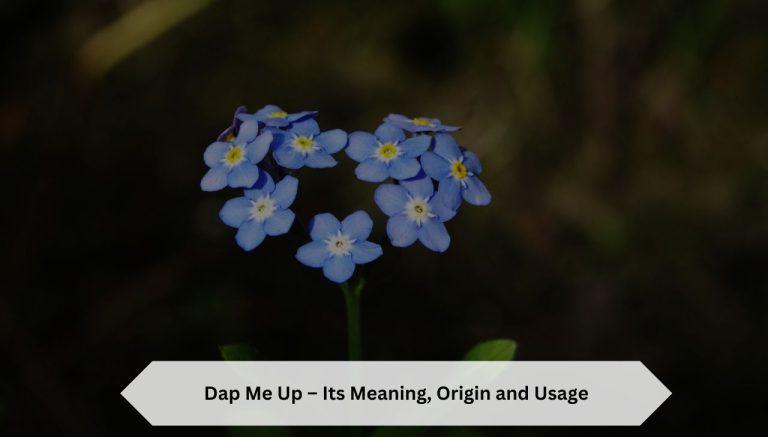23 best Ways to Say “Don’t Get Me Wrong synonym”
In our daily conversations, expressing ourselves clearly can be tricky. The phrase “Don’t Get Me Wrong meaning” comes up often when we try to prevent misunderstandings. As someone who works in communication, I’ve discovered that this common phrase, while applicable, is only sometimes the best choice.
Today, I’ll share 23 powerful alternatives to help you communicate your message more effectively.
Why We Need Alternatives of Don’t Get Me Wrong synonym
Before jumping into the alternatives, let’s understand why we need them. When I use the “don’t get me wrong synonym” in conversations, it sometimes feels too casual or overused. Depending on the situation, these alternatives can help us sound more professional, friendly, or formal. They also show that we care about correctly understanding and respecting our listeners.
Clear and Professional Alternatives

I Hope I’m Making Myself Clear
This phrase works wonderfully when making this happen in professional settings. I’ve found it especially useful in team meetings and client presentations. It shows confidence while ensuring understanding. For example, during project discussions, saying, “I hope I’m making myself clear; the deadline is crucial, but quality shouldn’t suffer,” helps maintain clarity and professionalism.
Just to Be Clear
This direct approach cuts through confusion instantly. In my experience, it works best in fast-paced environments where time matters. When used correctly, it can prevent hours of misunderstandings. For instance, “Just to be clear, the report needs both data analysis and visual presentations” leaves no room for confusion about project requirements.
I Mean No Misunderstanding
This phrase is perfect for sensitive discussions where feelings are involved. It shows emotional intelligence and cares for others’ perspectives. I often use it when giving feedback or discussing complex topics. It helps create a safe space for open dialogue.
Friendly and Casual Options

I Hope This Comes Across the Right Way
When I’ve Enjoyed the Company of colleagues or friends, this phrase helps maintain positive relationships. It’s gentle and considerate, perfect for personal conversations. I find it especially useful when giving advice or sharing concerns with close associates.
It’s Not That I’m Saying
This versatile phrase works great in casual settings. It helps clarify your position without sounding defensive. For example, “It’s not that I’m saying the idea won’t work; I just think we need more planning” shows thoughtful consideration rather than outright rejection.
Don’t get me wrong meaning.
A balanced option that works in both casual and semi-formal situations. It’s firm enough to make your point but friendly enough to maintain good relationships. I use this when I need to be clear about essential matters without creating tension.
Informal Alternatives

I’m Not Being Critical
When offering constructive feedback, this phrase sets a positive tone. It helps the listener stay open to suggestions rather than becoming defensive. “I’m not being critical, but have you considered approaching it differently?” opens up a dialogue rather than shutting it down.
Don’t Take This the Wrong Way
As another version of “Don’t get me wrong reply,” this phrase works perfectly in everyday situations. It’s friendly and direct while showing consideration for others’ feelings. I often use it before giving honest opinions or suggestions.
I’m Not Saying
This simple yet effective phrase helps clarify positions without complexity. It’s excellent for quick corrections or clarifications in casual conversations. Its simplicity makes it easy to use and understand.
Professional Clarifications

Not to Misinterpret My Words
This phrase maintains clarity and professionalism in professional environments where the Future Holds essential decisions. It’s beneficial in written communication, such as emails or reports, where tone can be misread.
Let’s Not Take This Out of Context
It is essential for meetings and presentations when making complex points. This phrase helps keep discussions focused and prevents misunderstandings before they happen. It’s beneficial when discussing sensitive topics or changes in policy.
Not to Be Misconstrued
This formal alternative works exceptionally well in business settings. It shows professionalism while ensuring your message is received as intended. It is perfect for important documents or formal presentations.
Gentle Corrections

Don’t Twist My Words
When dealing with situations involving “not owning up to your mistakes synonym,” this phrase helps maintain clarity while being assertive. It’s direct but not aggressive, perfect for correcting misinterpretations.
I’m Just Putting It Out There
A casual way to share ideas or concerns without pressure. This phrase creates a comfortable space for open dialogue and brainstorming. It reduces resistance to new ideas by presenting them in a non-threatening way.
I’m Not Knocking It
It’s excellent for balanced feedback situations. It shows appreciation while making space for improvements. I use this when I want to acknowledge good work while suggesting enhancements.
Respectful Alternatives

I Don’t Wish to Sound Harsh
When considering Future Endeavors, this phrase helps deliver challenging messages with care. It shows awareness of impact while maintaining honesty. It is perfect for performance reviews or constructive feedback sessions.
I Trust You’ll Understand
This option demonstrates confidence in the listener’s ability to grasp complex ideas. It creates a positive expectation and respects the other person’s intelligence and perspective.
I Say This with Respect
It is essential for maintaining professional relationships during difficult conversations. It shows consideration while delivering important messages, and I find it particularly useful in leadership positions.
Professional Refinements

To Put It Another Way
This phrase is helpful when explaining complex ideas or rephrasing for better understanding. It bridges gaps in communication and ensures everyone follows the discussion.
To Clarify My Stance
It is perfect for formal situations requiring precise communication. It helps prevent misunderstandings in important discussions and ensures your position is clear.
Final Clarifications
My Point Being
A direct way to emphasize key messages and summarize discussions. It helps focus attention on crucial details without being too formal.
What I’m Getting At Is
It is useful for steering conversations back to the main points. It helps maintain focus in lengthy discussions and clarifies complex ideas.
Allow Me to Explain Further
Creates space for detailed explanations when needed. Perfect for situations requiring in-depth discussion or clarification.
Conclusion
Mastering these alternatives to “don’t get me wrong synonym” can transform your communication style. Whether in professional meetings where Future Holds important decisions or casual conversations where you’ve Enjoyed the Company, choosing the right phrase makes a significant difference. Effective communication isn’t just about what we say but how we say it.
Using these alternatives thoughtfully will make your messages better understood and appreciated. Practice these options in different situations, and you’ll naturally develop a more refined and effective communication style.
FAQs
What does “don’t get me wrong” mean?
It’s a phrase used to prevent misunderstanding before making a statement that could be misinterpreted. It’s like saying, “please understand my true intention,” or clarifying your position before expressing an opinion.
What does “don’t get you wrong” mean?
This is an incorrect variation of “don’t get me wrong.” It needs to be grammatically correct and not commonly used. The proper phrase should be “don’t get me wrong” when trying to prevent misunderstanding.
What does “you got me wrong” mean?
This phrase indicates that someone has misunderstood your meaning or intentions. It points out a misinterpretation of your words or actions, essentially saying, “you’ve misunderstood me.”
Who originally sang “Don’t Get Me Wrong”?
“Don’t Get Me Wrong” was written and performed by The Pretenders’ lead singer, Chrissie Hynde, and released by them in 1986. It became one of their biggest hits, reaching top positions on charts worldwide.







